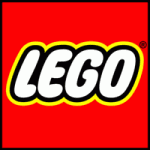What does it take to create award-winning radio advertising today?
Radio Advertising. Creating Winners.
Radio, as an advertising platform, is unique in the way that there is only one tangible sensory element in its presentation: sound. The limitations of the medium mean that budgets and production processes differ from platforms such as television, online, cinema and other visual media, which are generally much more demanding to produce.
As a consequence, these days, with the ever tightening marketing budgets, it is common for radio advertisements to be produced much more quickly and cheaply, with sometimes poorly conceived ideas or the lack thereof. This can result in content that is repetitive, predictable, and forgettable, much of which is evident in a large amount of radio advertising we hear today. Due to radio being a cost effective way to produce advertising however, it allows for additional time to be used in order to create memorable content.
Time is an element that is necessary to be prioritised when producing creative work at a level of high quality. This commercial for UNICEF was worked on and experimented with over an extensive period of time to ensure that the team could produce something that effectively communicated their intended message, and in a creative and interesting way. The Gold Loerie Award winning radio commercial is an example of how important the creative process is when producing award-winning content, and how vital it is to invest time into fully fleshing out an idea.
UNICEF – Coalition Against Child Soldiers
The writer of the commercial, Alison Hingle, explains the problems that arise from production limitations from an industry standpoint; “It is cheaper to make radio but for that reason radio is very rushed … you can go into the studio and in 3 hours, boom you’ve got a radio ad produced.”
She highlights the importance of investing time into each step of the production, and how crucial the collaborative process is to fully realising a creative idea.
Hingle explains how Paul at Baxter Sound spent “hours working on the sound design and playing with different things”, and how that after speaking with him about the commercial from a sound design perspective, it was re-scripted to more effectively convey the narrative.
Having the time to go back to the ad after a day of working with a fresh perspective allowed the team to understand what was working and what still needed to be done. “Being able to do that in this ad was an absolute gift, … having that time made it easier for [Paul] and easier for us, and what he brought to the party is at least 60% of the reason I think it won an award.”
Allowing the time for experimentation is crucial when it comes to building immersive and intricate worlds from which our stories are told. The ad ‘Fantasy’, featured in a campaign for Lego, uses complex sound design and voice work to create a highly immersive fantasy-themed setting.
Lego, Just Imagine – Fantasy
The sounds of a fantastical battle, paired with the references to LEGO blocks, convey feelings of wonder and adventure that the listener immediately correlates with the LEGO brand.
When it comes to storytelling, there is a multitude of ways to approach conveying a message or narrative. Often we use sound to immerse our listener in a location where the story unfolds, though sometimes a much simpler and more grounded approach can be even more effective at telling a story and grabbing the listener on an emotional level.
This TAC ad uses only voice to tell its story of a mother losing her son to a traffic accident.
TAC – Mother’s Day
The lack of any sound effects or music draws full attention to the voice and allows the listener to really listen to what’s being said. This gives the story, and message being conveyed, much more emotional impact than if it was shrouded in sound design.
The casting process is crucial when it comes to setting the right tone and making the content believable to listeners. Finding the right voice and performance to fit the narrative is just as important as sound design, as something grounded and ‘real’ is much more believable than the cheaply made, faux-conversational pieces that are so familiar in today’s advertising landscape.
So, what does it take to produce award-winning radio? Allowing the time to fully explore concepts and ideas is important when creating something memorable and entertaining. It is also key to have a completely realised narrative and find an effective method with which to convey it to the audience, whether it be with the use of sound design, music, voice direction, or a combination of these elements. These are extremely important foundations in radio production, as they allow the commercial to make full use of the medium from a technical and creative perspective, keeping listeners engaged and leaving them with something they’ll remember.





